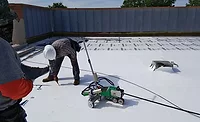Outfitting Your Vehicle To Suit Your Needs
Now that you've purchased the right vehicle, what should you consider when upfitting the vehicle with the necessary equipment to meet your needs? Proper upfitting relies on how closely you've examined your application, including items such as payload, annual mileage and life cycle.
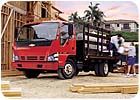
Now that you've purchased the right vehicle, what should you consider when upfitting the vehicle with the necessary equipment to meet your needs? Proper upfitting relies on how closely you've examined your application, including items such as payload, annual mileage and life cycle. For example, if you plan to replace a vehicle after 24 months in service, you'll want to avoid spending several thousands of dollars in aftermarket equipment (AME) that can't be transferred to the next vehicle. Furthermore, you want to make sure any aftermarket equipment you add to your vehicle is designed to handle the weight and physical size of your cargo, and that it also has some way to secure your cargo during transit.
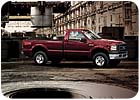
The center of gravity is affected by the height and width of the body. Properly securing the load on your vehicle will reduce the potential for vehicle rollover. The gross axle weight rating is greatly affected by the body length. For example, a body that is too short will tend to overload the front axle when loaded, while a body that is too long will overload the rear axle.
Another common request is to have a dock-high truck with a lower gross vehicle weight rating (GVWR). The problem with this is the manufacturers also post a maximum floor height, which ultimately affects the center of gravity because it not only moves the weight of the AME higher off the ground, but it also moves the weight of anything you load into the back of the truck. If you do install AME on a truck in a manner other than that approved by the manufacturer, you face an added liability exposure by producing an unsafe vehicle. In addition, this could void the manufacturer's warranty.
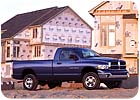
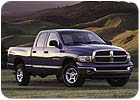

Remember, these items also need to be reviewed on a case-by-case basis to make sure the upfit meets the manufacturer's requirements.
A little prep work will go a long way when outfitting your vehicle. If you take the time to address your needs in advance, you will create and more efficient vehicle, incur less downtime, save money on repairs, and reduce your overall liability exposure while putting a safer, more productive vehicle on the road.

Photo courtesy of General Motors
Now that you've purchased the right vehicle, what should you consider when upfitting the vehicle with the necessary equipment to meet your needs? Proper upfitting relies on how closely you've examined your application, including items such as payload, annual mileage and life cycle. For example, if you plan to replace a vehicle after 24 months in service, you'll want to avoid spending several thousands of dollars in aftermarket equipment (AME) that can't be transferred to the next vehicle. Furthermore, you want to make sure any aftermarket equipment you add to your vehicle is designed to handle the weight and physical size of your cargo, and that it also has some way to secure your cargo during transit.

Photo courtesy of Ford
Consider Original Equipment Manufacturers' Restrictions
Original equipment manufacturer (OEM) restrictions should always be taken into account when installing AME. Manufacturers have maximum dimensions that are published in "Body Builders Guides" that need to be followed because they affect the vehicle's center of gravity and gross axle weight.The center of gravity is affected by the height and width of the body. Properly securing the load on your vehicle will reduce the potential for vehicle rollover. The gross axle weight rating is greatly affected by the body length. For example, a body that is too short will tend to overload the front axle when loaded, while a body that is too long will overload the rear axle.
Another common request is to have a dock-high truck with a lower gross vehicle weight rating (GVWR). The problem with this is the manufacturers also post a maximum floor height, which ultimately affects the center of gravity because it not only moves the weight of the AME higher off the ground, but it also moves the weight of anything you load into the back of the truck. If you do install AME on a truck in a manner other than that approved by the manufacturer, you face an added liability exposure by producing an unsafe vehicle. In addition, this could void the manufacturer's warranty.

Photo courtesy of Daimler Chrysler
Towing Equipment
If your needs require towing, trailer towing capability needs to be examined when customizing your vehicle. You need to make sure the vehicle has the capacity to tow the maximum weight you plan to tow and that the proper towing equipment is installed. For instance, make sure the hitch you are using is rated higher than the maximum trailer weight you will be towing and review the manufacturer's guidelines to determine when a trailer brake control should be used. A good rule of thumb to use is this: When the maximum trailer weight exceeds 40 percent of the total weight of the towing vehicle, an electric brake control should be used, and in some cases it is required by law.Power Takeoff
Although used in very specific applications and on a limited basis, power takeoff (PTO) applications should be considered carefully. You need to make sure the vehicle PTO has the torque rating needed along with the proper revolutions per minute (RPM) at the right time.
Photo courtesy of Daimler Chrysler
Pickup Box Removal
Today, the increase in manufacturer restrictions has made pickup box removal increasingly more difficult. In some instances the AME being installed is limited to a maximum weight that will only allow for a body and bumper, not leaving any additional capacity to install a hitch or ladder rack. In extreme circumstances, some manufacturers have forbidden the removal of the pickup box altogether.
Photo courtesy of Ford
Suiting Your Needs
Ramps, lift gates, cranes and winches are examples of additional equipment that can be included in the AME upfit. These items can make your job easier, and in some cases are required to do your job. Customizing a truck properly can also reduce job-related injuries caused by a worker loading heavy or bulky products. For example, the cost of adding a lift gate to assist with loading large or heavy objects doesn't come close to a hospital and physical therapy bill from a worker injuring his or her back.Remember, these items also need to be reviewed on a case-by-case basis to make sure the upfit meets the manufacturer's requirements.
A little prep work will go a long way when outfitting your vehicle. If you take the time to address your needs in advance, you will create and more efficient vehicle, incur less downtime, save money on repairs, and reduce your overall liability exposure while putting a safer, more productive vehicle on the road.
Looking for a reprint of this article?
From high-res PDFs to custom plaques, order your copy today!



